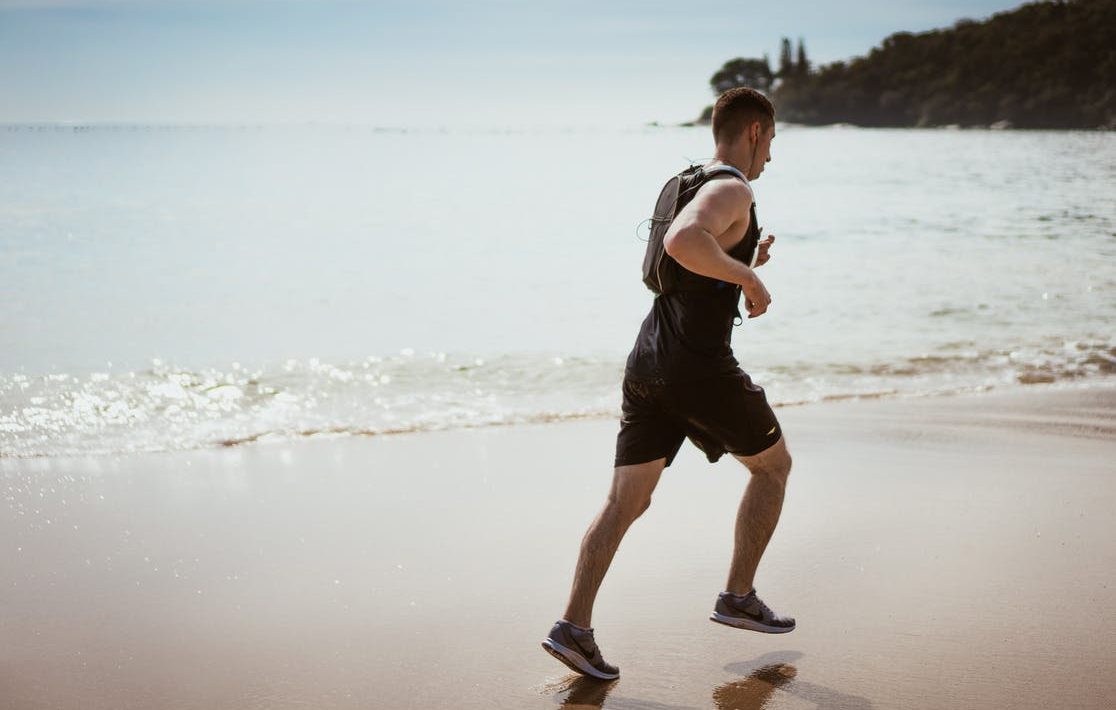Maybe someone told you that you’re a “heel striker” when you should be running “toe-heel.” Maybe you saw a recent race photo and your run technique wasn’t exactly picture-perfect. You might be coming back from an injury that could have been related to poor run technique. Or perhaps you want to run faster and build your speed out by improving your running form.
Whatever your reason, bettering your run technique is a great goal for runners of all levels. But there is a right way to do it!
Proper running technique is not an arbitrary combination of movements that we can teach ourselves once and be done with it. Rather, it is a gradual examination of running – something our bodies are naturally able to do.
Running is an innate movement pattern in our bodies, and it can change over time as bad habits creep in. So as we look to gradually better our run technique, we go back to our roots and get our running back to its purest, most correct form.
Running From The Top Down: An Overview
While it may be true that your footstrike, or how your foot hits the ground when you run, has an impact on your run technique, your footstrike is often just the end of the kinetic chain that is controlling your full-body run technique.
To take a closer look at this, let’s examine run posture from the top down. When running, make sure the ears, shoulders, hips, knees, and ankles are all connected in a straight line down.
Be sure the arms are not swinging past the body’s midline and causing a twist; we want the torso pointing forward.
The hip bones should be aimed straight ahead, not down at the ground.
Maintain an awareness of how you are pushing off the ground and pulling your leg up underneath you. The connection between those two movements is your cadence, a vital component of both run form and run speed.
When we put all of these ideas together and take care of those details, your feet will naturally land underneath you, which is where they need to be.
Drill #1: Hip Position
Your hips inform your body’s posture dramatically when you’re running. Your hips act as the body’s center of mass for the most part, which means when they go far enough forward, they’ll bring the rest of the body with them.
Doing this enough creates the forward momentum we use every day while walking or running.
Driving the hips forward also helps engage the glutes behind us. This is crucial for running because we cannot extend our legs behind us without pressing the hips forward and engaging the glutes.
Engaging the glutes also stabilizes the pelvis which will minimize bad habits in the hips when we run.
To get acquainted with these ideas, simply take 10 rocks forward and backward on your feet before you get going on your run. When you’re doing this, notice how your hips dictate where your balance lies, and make sure your glutes are squeezed.
Drill #2: Pulling Exercise
Running is more than just pushing off the ground, it’s pulling that foot up off of the ground as well.
When we pull our foot off the ground we want to pull it right underneath ourselves. Think of this as the exact midpoint between a high-knee run and a butt-kick. We’re drawing one leg right up the inseam of the other leg.
In the middle of your run, exaggerate this movement by pulling one heel up as high as possible keeping that thigh parallel to the ground. Do this 10 times with one leg, 10 times with the other leg, and then 10 times alternating between your legs.
This will reinforce proper run mechanics, and it’s going to reactivate the glutes and hamstrings, which may have gone to sleep since you started running.
Drill #3: Footwork
When we run, our feet act as our shock absorbers. No matter how much cushion our running shoes our feet have to offer, it’s actually our feet that control the impact when we land.
To practice using our feet for the small springs they are when we run, just practice bouncing. Stand in place with proper posture, and bounce up and down before you get going on your run.
Make sure your shoulders are relaxed and your knees are slightly bent. Each time you land your heels should just lightly kiss the ground. While posture is important, make sure you don’t feel stiff during these bounces.
After 10 bounces, start to pick your feet up and you’re ready to run.
Working These Drills Into Your Run
We’re building habits here, so consistency is going to be key. To build these drills into your routine, try to incorporate one in the first 10 minutes of your run, and one in the last 10 minutes of your run every time you head out.
If you’re going for a longer run, throw one of these in every 20-30 minutes to reawaken muscle groups and mind-body connections that may have gone to sleep.
There’s room to play here. Feel free to add in some air squats or push-ups in addition to one of these mid-run drills. Forcing your body to do something new is going to kickstart that mind-body connection once again, and lead you right back into the proper run technique your body already knows.
How It Works Over Time
Our bodies prefer incremental, gradual change as opposed to big shocks to our system. If we incorporate these drills into our runs regularly, we don’t need to wake up those muscle groups after a while – they will never have fallen asleep.
This requires time and discipline, but it will work! Your body knows how to run, we’re just getting rid of some fatigue-driven habits that have crept in over time.
What If I Need A Complete Overhaul?
A total overhaul for your run technique may be appropriate every once in a while. Before we dive into what that looks like, let’s talk timing.
The best and only time for a run form overhaul is during your off-season. Do not try to make big changes to your form before a race. Your body will be too confused and out of rhythm for any race-day success.
Instead, find 4-6 weeks where you can commit to cutting your run volume back by over 50%. While it may sound drastic, your body needs that shift in order to make big changes without injuring yourself.
Cutting back will allow your body to adjust to these new movement patterns on a small scale. If we demand such a big change over too many miles, bad habits will creep right back in.
Instead, start small and get familiar with the proper run technique, and then work your way up from there. For a refresher on what that proper run form looks like, check out this video on head-to-toe technique.
One final tip: getting a teaching shoe! When re-working your run technique entirely, it’s helpful to get a “teaching shoe,” meaning a shoe with minimal support that allows your feet to feel the ground.
Often times if a shoe is offering too much cushion and support, your body is unable to make real, physiological changes, particularly around your ankle and feet.
These shoes will just be used for those short technique runs. You will most likely be putting less than 5 miles per week on the shoe, but it’s a great way for your body to understand its own mechanics.
Conclusion
Our bodies like gradual change. If you are just looking to get rid of a few bad habits that come around when the fatigue sets in, go for the drill approach.
Incorporate one of the above drills near the beginning of your run, one near the end, and perhaps one in the middle if your mileage allows that. Don’t be afraid to switch up which drills you are doing, and to add in other exercises like push-ups, skipping, or air squats.
If you need a total technique overhaul, be sure you have the time to do it – this means your offseason! Find a time when you can cut back your mileage dramatically in order to introduce your body to new movement patterns.
Once your body adapts to these ideas on short runs, they’ll feel like second nature as you build your miles back up again.
About Author:-
Holly Martin is a San Francisco-based running coach and personal trainer. With a 20+ year background in dance, Holly brings a strong focus on technique and mobility to all of her coachings. Currently, she coaches online with The Run Experience, an online training community that specializes in providing running workouts plans, half marathon training for beginners, workouts and more. She trains clients at Midline Training and Nfinite Strength. Check out their various running programs, videos & other tips to improve your running.







